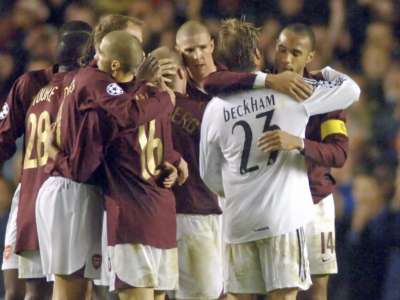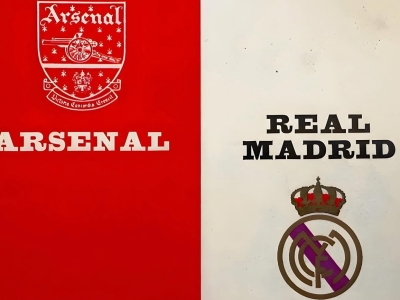With David Luiz and Cedric Soares earning new deals at Arsenal, Raul Sanlleh
Luiz’s time at Arsenal has been a resounding failure, with his error-strewn first season costing the club a total of £24m – including a £10m-a-year salary as the Gunners seem set to slump to their worst season in a quarter of a century.
According to The Athletic, £8m of that fee went to intermediaries who got the deadline day deal over the line, including his advisor Kia Joorabchian.
The Iranian-born businessman is the sole director of Sports Invest UK Limited and he has seen his influence increase in north London since Sanllehi was appointed head of football in late 2018.
Prior to that he held no sway while Arsene Wenger was boss as the long-serving Frenchman refused to bow to any external influences over his transfers.
However, Spaniard Sanllehi's preference for more traditional agent-led transfer business has seen Joorabchian pitch a number of deals to the club, including Soares, who has been given a four-year deal at the Emirates even though he is yet to play for the Gunners.
With 'dysfunctional' Arsenal’s precarious financial situation, the club have to be cautious about who they sign on long-term deals.
The 48-year-old Joorabchian was involved in the deal to bring Argentine duo Carlos Tevez and Javier Mascherano to West Ham in 2006, but third-party ownership issues would lead to a number of court cases and the changing of transfer laws in England.
Joorabchian clients include Willian, Philippe Coutinho and Neto with all being linked with the Gunners in recent months, he continues to impact transfer business in north London.
The current recruitment policy at the club can be set against a list of failures and mistakes prior to Joorabchian's prominence at the Emirates, dating all the way back to 2011 and the introduction of StatDNA at the Emirates.
Founded by Jaeson Rosenfeld, the analytics company originally became involved with the club on a consultancy basis as Arsenal looked to change their transfer policy after signings such as Marouane Chamakh and Park Chu-Young failed to cut the mustard.
The Gunners reportedly paid £250,000 for the exclusive use of StatDNA, before forking out £2m in 2012 to buy the company, absorb it into the club’s footballing structure and rebranded it Arsenal Data Analytics.
The use of analytics was supposed to give the club a leg up on their rivals in the transfer market, but failings continued.
StatDNA led to a number of dud signings towards the end of Arsene Wenger’s reign, while according to the New York Times it also raised concerns over signing the likes of Antoine Griezmann – then at Real Sociedad – and Kevin De Bruyne, both of whom have gone on to become world-class players.
But, Arsenal’s use of analytics seemed to take a turn for the better when Sven Mislintat was appointed as head of recruitment in November 2017.
The German had earned a reputation as one of football’s best talent spotters during his spell at Borussia Dortmund, with the man nicknamed ‘Diamond Eye’ seen as key to revolutionising the club.
Using a combination of conventional scouting and data analysis, Mislintat oversaw the signings of Pierre-Emerick Aubameyang, Bernd Leno, Lucas Torreira and Matteo Guendouzi, all of whom have gone on to have an impact at the Emirates.
Torreira’s signing more than any other showed how effective the combination of Mislintat and StatDNA could be, with the club opting to sign the Sampdoria midfield after data showed striking comparisons with Chelsea’s N’Golo Kante.
Although there were some poor additions, the club’s transfer business seemed to be taking a turn for the better. That was until a key change in the hierarchy took place in 2018.
When Ivan Gazidis departed for AC Milan, Sanllehi was appointed head of football. As part of his 2017 move to the club, Mislintat had been promised he would eventually become technical director. Sanllehi had other ideas though, instead appointing Edu to that role in the summer of 2019.
Mislintat then grew frustrated with the Spaniard’s more traditional approach to transfer business, finding himself and the analytics department marginalised despite a positive summer window.
The loan move for Barcelona’s Denis Suarez last January proved to be the final straw.
Arsenal’s head of recruitment was against the signing and instead suggested that youngsters already at the club should be given more opportunities. He was ignored and Suarez was signed.
The midfielder would play just 95 minutes of football for the club and is now regarded as one of Arsenal’s worst ever signings, proving Mislintat's concerns to be correct.
Fed up with the way the club was now operating, the German left his role as head of recruitment in February 2019. The man who was supposed to revolutionise Arsenal had lasted just 14 months.
In an interview with 11Freunde, Mislintat revealed more about his departure and Sanllehi’s appro
“We had different approaches,” he said.
“Previously we had a strong systematic approach to transfers, a mixture of watching things live as well as quality data and video analysis – Arsenal actually owns their own data company.
“That meant that we acted independently, we knew about all markets and players in all positions that came into question.
“However, the new leadership work more strongly with what they are offered from clubs or agents through their own networks.”
Rosenfeld has now also departed the club, joining Wenger at FIFA in March 2018 and leaving the Arsenal with a vastly depleted data analysis team as Sanllehi’s contacts-based approach continues to take over.
With limited transfer funds, financial losses and the huge impact of Covid-19, Arsenal now more than ever need a recruitment team focused on unearthing young, low-cost talent to improve the team and build for the future.
Whether they focus on youth remains to be seen.








